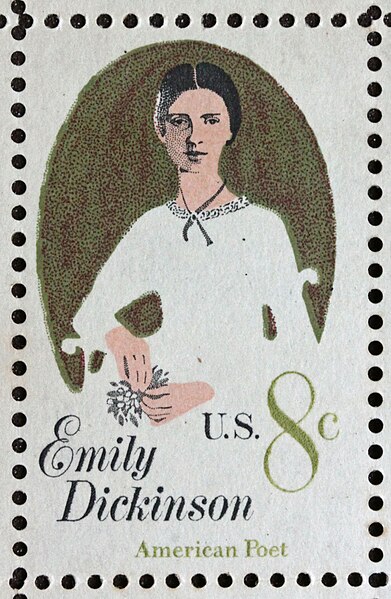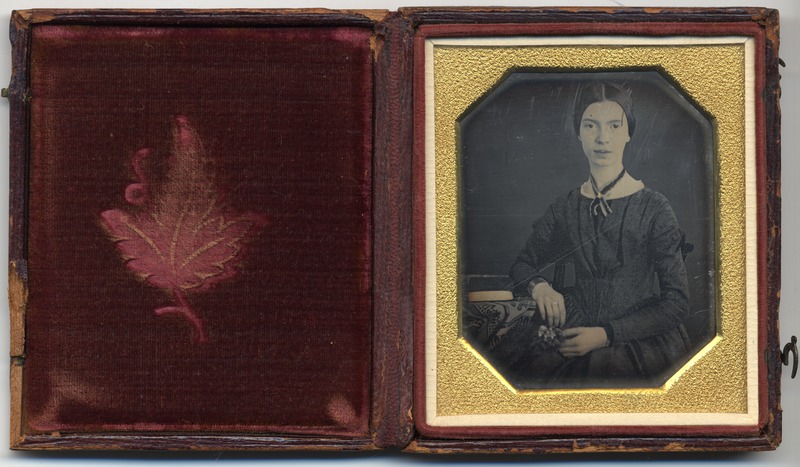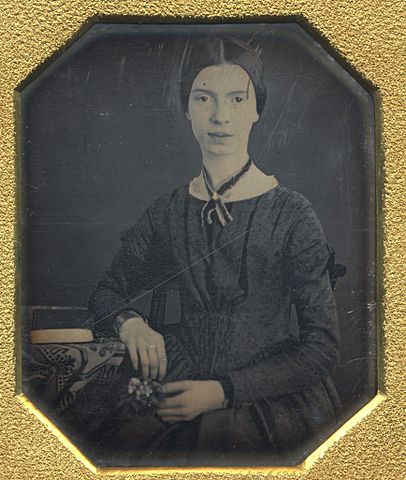
Through the generosity of the late Professor Benedict Anderson and Ajarn Charnvit Kasetsiri, the Thammasat University Library has newly acquired an important book of interest for students of history, political science, literature, and related fields. It is part of a special bequest of over 2800 books from the personal scholarly library of Professor Benedict Anderson at Cornell University, in addition to the previous donation of books from the library of Professor Anderson at his home in Bangkok. These newly available items will be on the TU Library shelves for the benefit of our students and ajarns.
Among them is a newly acquired book about one of America’s greatest poets. My Wars Are Laid Away in Books: The Life of Emily Dickinson by Alfred Habegger is shelved among the General Books in the Charnvit Kasetsiri Room of the Pridi Banomyong Library, Tha Prachan campus. It describes a poet who lived in New England in the 1800s, but who was interested in a wide range of subjects and places. The TU Library owns a number of other books by and about Emily Dickinson.
They mention a friend of Dickinson’s, Helen Hunt Jackson, who was also a poet, and took an interest in the treatment of Native Americans. Jackson was a classmate at school of Emily Dickinson. Jackson also met and got to know Anna Leonowens, the Indian-born British travel writer and educator who wrote heavily fictionalized memoirs of her time in Siam, teaching the children of HM King Rama IV. The TU library owns several books by and about Anna Leonowens.
After speaking at length to Leonowens about marriage customs in Siam and among Mormon families in Utah in the United States, Jackson was moved to write The Story of Boon, a long poem set in Siam. It is likely that Emily Dickinson saw this poem, as it was published in 1875 and written by her longtime friend Jackson, although Dickinson did not consider Jackson to be a good poet. Dickinson was correct.
The Story of Boon, a sentimental story of a Siamese maiden, is not a good poem, and it is certainly not an accurate portrait of life in Siam in the 1800s. But it does show that in America, not long after the Civil War, Siam played a role in the national literary imagination. The Story of Boon is described as based on a story told by Mrs. Leonowens, the English governess at the Siamese court. It begins in conventional romantic style, like many other poems published in American literary journals of the time:
It haunts my thoughts morn, night, and noon,
The story of the woman, Boon, —
Haunts me like restless ghost, until
I give myself to do its will;
Cries voiceless, yet as voices cry, —
” O singer, can this tale pass by
Untold by thee? Thy heart is wrung
In vain, if dies the song unsung. ”
I am unworthy: master hands
Should strike the chords, and fill the lands
From sea to sea with melody
All reverent, yet with harmony
Majestic, jubilant, to tell
How love must love, if love loves well;
How once incarnate love was found
On earth, dishonored, martyr-crowned,
Crowned by a heathen woman’s name, —
O blessed Boon, of peerless fame!
In Siam’s court the Buddhist King
Held festival. Fair girls to sing,
And dance, and play, were led between
Close ranks of Amazons in green
And gold.
As we can see, there is no special knowledge about Siam in Jackson’s poem. Siam is used as a distant, romantic setting by the writer. By contrast, Emily Dickinson wrote short, powerful poems of the highest quality, and almost never published anything. She never used romantic or sentimental settings that were popular among authors of her day. Yet her work continues to influence writers and readers worldwide, more than ever.
Her poems have fascinated such noted Thai writers as Montri Umavijani, who translated many of her poems into Thai language.
The TU Library owns copies of this translation, shelved in the General Stacks of the Boonchoo Treethong Library, Lampang Campus and the General Stacks of the Pridi Banomyong Library. To celebrate the 168th anniversary of Emily Dickinson’s birth, Montri Umavijani translated 168 of her poems into Thai. Dickinson’s poems had been translated into Thai before, but the new translations were acclaimed for their high quality.
The translator’s wife, Associate Professor Chutatip Umavijani, is a philosopher who has taught at Thammasat University. The TU Library also owns a book by Ajarn Chutathip, Buddhist Chanting For Health, Peace and Happiness.
A text posted online by the poet and translator John Solt, an expert in Japanese Surrealism and avant-garde poetry, describes how Khun Montri was further inspired to translate Dickinson’s work by a visit to her family home in Amherst, Massachusetts. Solt wrote in 1998:
When it came time to depart from Amherst, Montri asked me to drive by the graveyard so he could say one last goodbye to Emily. I complied and waited in the car. Tourists often leave coins on her grave as a sign of respect and affection, so I asked Montri if he, too, had left a coin or two. “No,” he replied, “I went to bury my used ink cartridges.” Only then did I discover that he had been translating a selection of Emily’s poems into Thai. Emily still hovers over the town of Amherst. Montri has since returned to the traffic jams of Bangkok…

Examples
To get an idea of why Emily Dickson’s short, strong poems are admired by later generations while her friend Helen Hunt Jackson’s long, emotional verse is not, here are a few examples of some of Dickinson’s most appreciated works. As Dickinson did not give titles to these poems, they are generally known by their first lines.
They are about such subjects as failure as seen by the world and by the individual, fame and celebrity, and the essence of telling the truth in writing. Dickinson always has a modest understanding of those who are not seen as successful in the eyes of the world. She also considers people who hope to be famous and recognized by all to be ridiculous.
***********************
Success is counted sweetest
Success is counted sweetest
By those who ne’er succeed.
To comprehend a nectar
Requires sorest need.
Not one of all the purple Host
Who took the Flag today
Can tell the definition
So clear of victory
As he defeated – dying –
On whose forbidden ear
The distant strains of triumph
Burst agonized and clear!
***********************
I’m Nobody! Who are you?
I’m Nobody! Who are you?
Are you – Nobody – too?
Then there’s a pair of us!
Don’t tell! they’d advertise – you know!
How dreary – to be – Somebody!
How public – like a Frog –
To tell one’s name – the livelong June –
To an admiring Bog!
*************************
Tell all the truth but tell it slant
Tell all the truth but tell it slant —
Success in Circuit lies
Too bright for our infirm Delight
The Truth’s superb surprise
As Lightning to the Children eased
With explanation kind
The Truth must dazzle gradually
Or every man be blind —
***********************

(All images courtesy of Wikimedia Commons)
